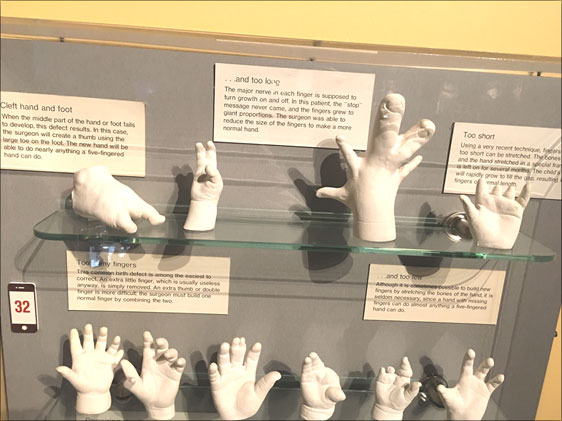Hand and Upper Extremity Surgery
Everything you need to knowHand and Upper Extremity Surgery
Conjoined fingers, more fingers than normal, missing fingers, fingers larger than normal, fractures and tumors in hand bones, tendon ruptures, hand vascular injuries

Hand and Upper Extremity Surgery
Hand surgery is one of the basic subbranches of plastic surgery. Microsurgery, which is usually evaluated together, includes vascular and nerve repairs in hand injuries and is one of the vital sub-elements in hand surgery.
When it comes to hand surgery, it includes congenital anomalies and acquired health problems of the entire anatomical structure, which is called the upper limb or upper extremity in medical language, from the shoulder to the fingertip, including the nail.
Image Note: Upper limb or upper limb. (Photo: Nebil Yeşiloğlu, Germany, Berlin Bergama Museum, 2017)
Hand surgery is a branch of science in which congenital deformities are frequently treated. Congenital anomalies of the upper extremity, that is, abnormalities present at birth, are frequently seen in society, at varying rates. Since the anomalies are very numerous in type, certain classifications have been put forward.
Among these, the patient groups we encounter and operate on more frequently are the following anomalies:
- Sticky fingers (syndactyly)

- Image Note: Syndactyly (Conjoined finger) deformity
- Having more fingers than normal (polydactyly and thumb duplications)

- Image Note: Polydactyly (more fingers than normal) deformity
- Absence of fingers or smaller than normal (such as finger agenesis, brachydactyly or synbrachydactyly)
- Absence of hand, wrist and forearm bones individually or together
- Fingers being larger than normal (macrodactyly)

- Image Note: Some of the hand and foot anomalies exhibited at the Boston Museum of Science. (Photo: Nebil Yeşiloğlu, USA, Boston, Massachusetts, 2016)
- Congenital deficiencies of structures in the hands and upper extremities, with or without the pectoral muscles, breast tissue and nipple (Poland sequence)
Another important topic of hand surgery is acquired problems. This group is quite broad and may be easier to differentiate by tissue type:
- Fractures and tumors of bones in the hand and upper extremity

- Image Note: Fracture in finger bones
- Injuries and tumors of the tendons of the hand and the muscles of the forearm and arm

- Image Note: Hand tendons and forearm muscles (from front)
- Injuries to the nerves that stimulate the muscles in the hand and upper extremity, nerve compression and nerve tumors (e.g. Schwannoma)
- Injuries to the vessels in the hand and upper extremity and tumors that may be of vascular origin (e.g. arteriovenous malformations)
Hand surgery operations can be performed by anesthetizing the patient or, if the patient is 16 years or older, with nerve blocks in the armpit (axillary block) or above the collarbone, depending on the patient's compliance and the area to be operated on.
After hand surgery, a plaster splint is applied for varying periods of time depending on the nature of the surgery, and the splint is removed at regular intervals, the dressing is renewed, and the splint is reapplied.
After hand surgery, an issue that is at least as important as surgery is hand physiotherapy. Hand physiotherapy should be performed by hand therapists who have experience in this field. The value of hand physiotherapy is undeniable in terms of preventing the joints connecting the hand bones from freezing and restoring the function of the cut structures.
To get detailed information about these topics, please follow my future blog posts. Please make an appointment to be examined for your problem.
"Health is the most important thing you have in life!"
Contact us now to schedule an appointment.

